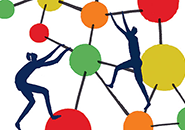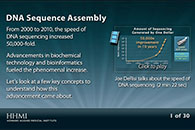In August 2012, 14-year-old Joshua Osborn went for a freshwater swim while visiting Puerto Rico. That memorable summer outing led to a life-threatening brain infection that stumped his doctors. A new DNA sequencing technology saved his life.
After returning home to Wisconsin, Joshua started getting headaches and fevers. Eventually, these symptoms escalated, leading to uncontrollable seizures. A battery of tests failed to reveal the cause of his illness, so Joshua was put in a medically induced coma to buy time.
Joshua’s pediatrician, James Gern, contacted Joseph DeRisi, an HHMI investigator at the University of California, San Francisco (UCSF), and a leader in using new genomics techniques to identify unknown pathogens. Gern had been hunting for the viral causes of asthma with DeRisi and believed that his collaborator’s expertise could help the boy.
For the past 7 years, DeRisi and his colleagues, including Don Ganem at Novartis Institutes for Biomedical Research and Charles Chiu at UCSF, had been developing the use of next-generation sequencing for the diagnosis of infectious disease. His team sequenced the DNA in samples of Joshua’s blood and spinal fluid and created a library of more than 8 million distinct DNA sequences. Then, using an analysis tool called SURPI, created by Chiu, they compared the pieces of DNA to the genetic sequences of all known pathogens.
The process took less than 48 hours and it revealed that 475 sequences in Joshua’s DNA library came from a type of bacteria called Leptospira, which causes a dangerous but often treatable infection. Joshua was given high-dose IV penicillin and his brain swelling quickly subsided. DeRisi and his colleagues published their results in The New England Journal of Medicine on June 19, 2014.
Scientists have been using DNA sequencing to identify pathogens for years, but without next-generation sequencing the process can be slow and cumbersome, taking weeks to provide a result. “In a previous interview with the New York Times, I mentioned that this could be the ‘one test to rule them all,’ and I was serious about that,” says DeRisi. “Next-generation sequencing has the potential to replace scores of other diagnostics, making diagnosis of infectious disease less biased, more sensitive, more specific, and more trustworthy.”









